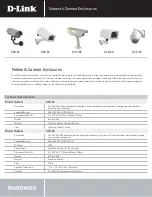
You can display the total amount of fuel on-board either as a
numeric display that shows the total fuel or as a graphic display
that shows the level in each fuel tank.
1
Select
Gauges
>
Engine
>
Menu
>
Gauge Setup
>
Fuel
Display
.
2
Select an option:
• To display a numeric value for the total fuel level in all
tanks, select
Use Total Fuel Onboard
.
• To display a graphical representation of the amount of
fuel in each tank, select
Use Fuel Tank Levels
.
Setting the Fuel Capacity of the Vessel
1
Select
Settings
>
My Vessel
>
Fuel Capacity
.
2
Enter the combined total capacity of the fuel tanks.
Synchronizing the Fuel Data with the Actual Vessel
Fuel
You can synchronize the fuel levels in the chartplotter with the
actual fuel in the vessel when you add fuel to your vessel.
1
Select
Gauges
>
Engine
>
Menu
.
2
Select an option:
• After you have filled up all the fuel tanks on the vessel,
select
Fill Up All Tanks
. The fuel level is reset to
maximum capacity.
• After you have added less than a full tank of fuel, select
Add Fuel to Boat
, and enter the amount added.
• To specify the total fuel in the vessel tanks, select
Set
Total Fuel Onboard
, and enter the total amount of fuel in
the tanks.
Setting the Fuel Alarm
Before you can set a fuel level alarm, a compatible fuel flow
sensor must be connected to the NMEA 2000 network.
You can set an alarm to sound when the total amount of
remaining onboard fuel reaches the level you specify.
1
Select
Settings
>
Alarms
>
Fuel
>
Fuel Alarm
>
On
.
2
Enter the remaining amount of fuel that triggers the alarm.
Viewing the Wind Gauges
Before you can view wind information, you must have a wind
sensor connected to the chartplotter.
Select
Gauges
>
Wind
.
Configuring the Speed Source
You can specify whether the vessel speed data displayed on
the gauge and used for wind calculations is based on water
speed or GPS speed.
1
Select
Gauges
>
Wind
>
Menu
>
Speed Display
.
2
Select an option:
• To calculate the vessel speed based on data from the
water-speed sensor, select
Water Speed
.
• To calculate the vessel speed based on GPS data, select
GPS Speed
.
Configuring the Heading Source of the Wind Gauge
You can specify the source of the heading displayed on the
wind gauge. Magnetic heading is the heading data received
from a heading sensor, and GPS heading is calculated by your
chartplotter GPS (course over ground).
1
Select
Gauges
>
Wind
>
Menu
>
Heading Source
.
2
Select
GPS Hdg
or
Magnetic
.
Selecting the Range of the Close-Hauled Wind Gauge
You can specify the range of the close-hauled wind gauge for
both the upwind scale and the downwind scale.
1
Select
Gauges
>
Wind
>
Menu
.
2
Select an option:
• To set the maximum and minimum values that appear
when the upwind close-hauled wind gauge appears,
select
Change Upwind Scale
, and set the angles.
• To set the maximum and minimum values that appear
when the downwind close-hauled wind gauge appears,
select
Change Downwind Scale
, and set the angles.
Viewing the Environment Gauges
Select
Gauges
>
Environment
.
Configuring the Alignment of the Wind Gauge
You can specify the alignment of the wind gauge on the
environment gauges.
1
Select
Gauges
>
Environment
>
Menu
>
Alignment
.
2
Select an option:
• To set the top of the wind gauge to a North heading,
select
North Up
.
• To rotate the gauge so the direction in which you are
moving is at the top, select
Head Up
.
Configuring the Heading Source of the Environment
Gauge
You can specify the source of the heading displayed on the
environment gauge. Magnetic heading is the heading data
received from a heading sensor, and GPS heading is calculated
by your chartplotter GPS (course over ground).
1
Select
Gauges
>
Environment
>
Menu
>
Heading Source
.
2
Select
GPS Hdg
or
Magnetic
.
Setting the Barometer Reference Time
You can specify the reference time used to calculate the
barometer trend. The trend is indicated in the barometer field.
1
Select
Gauges
>
Environment
>
Menu
>
Pressure
Reference Time
.
2
Select an option.
Tide, Current, and Celestial Information
Tide Station Information
You can view information about a tide station for a specific date
and time, including the tide height, and when the next high and
low tides will occur. By default, the chartplotter shows tide
information for the most recently viewed tide station and for the
present date and time.
Select
Nav Info
>
Tides & Currents
>
Tides
.
Current Station Information
NOTE:
Current station information is available with certain
detailed maps.
You can view information about a current station for a specific
date and time, including the current speed and level of the
current. By default, the chartplotter shows current information
for the most recently viewed current station and for the present
date and time.
Select
Nav Info
>
Tides & Currents
>
Currents
.
Celestial Information
You can view information about sunrise, sunset, moonrise,
moonset, moon phase, and the approximate sky view location
of the sun and moon. The center of the screen represents the
sky overhead, and the outermost rings represent the horizon.
By default, the chartplotter shows celestial information for the
present date and time.
Select
Nav Info
>
Tides & Currents
>
Celestial
.
12
Gauges and Almanac Information
















































